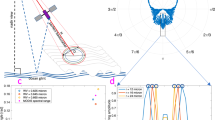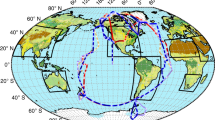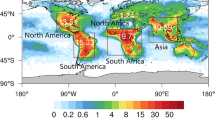Abstract
THE remarkable clouds at high altitude which have been the subject of two interesting articles by Prof. Carl Størmer1 and Prof. S. Chapman2 in NATURE are referred to as iridescent or mother-of-pearl clouds. In order to prevent misunderstanding, I should like to point out that the high clouds in question should not be confused with the much more common ‘iridescent clouds’ which are described in most textbooks of meteorology.3 The latter are cirro-stratus or cirro-cumulus clouds and are certainly well within the troposphere, at a height of approximately 10,000 metres, while the clouds described by Størmer are two or three times as high and are well within the stratosphere.
This is a preview of subscription content, access via your institution
Access options
Subscribe to this journal
Receive 51 print issues and online access
$199.00 per year
only $3.90 per issue
Buy this article
- Purchase on Springer Link
- Instant access to full article PDF
Prices may be subject to local taxes which are calculated during checkout
Similar content being viewed by others
References
NATURE, Feb. 16, 1929, p. 260.
NATURE, April 2, 1932, p. 497.
see "Meteorologische Optik", by Pertner-Exner, second edition, p. 460.
Simpson, Quar. J. Roy. Met. Soc., 38, 291; 1912.
Author information
Authors and Affiliations
Rights and permissions
About this article
Cite this article
SIMPSON, G. Types of Iridescent Clouds. Nature 129, 689–690 (1932). https://doi.org/10.1038/129689b0
Issue Date:
DOI: https://doi.org/10.1038/129689b0
Comments
By submitting a comment you agree to abide by our Terms and Community Guidelines. If you find something abusive or that does not comply with our terms or guidelines please flag it as inappropriate.



